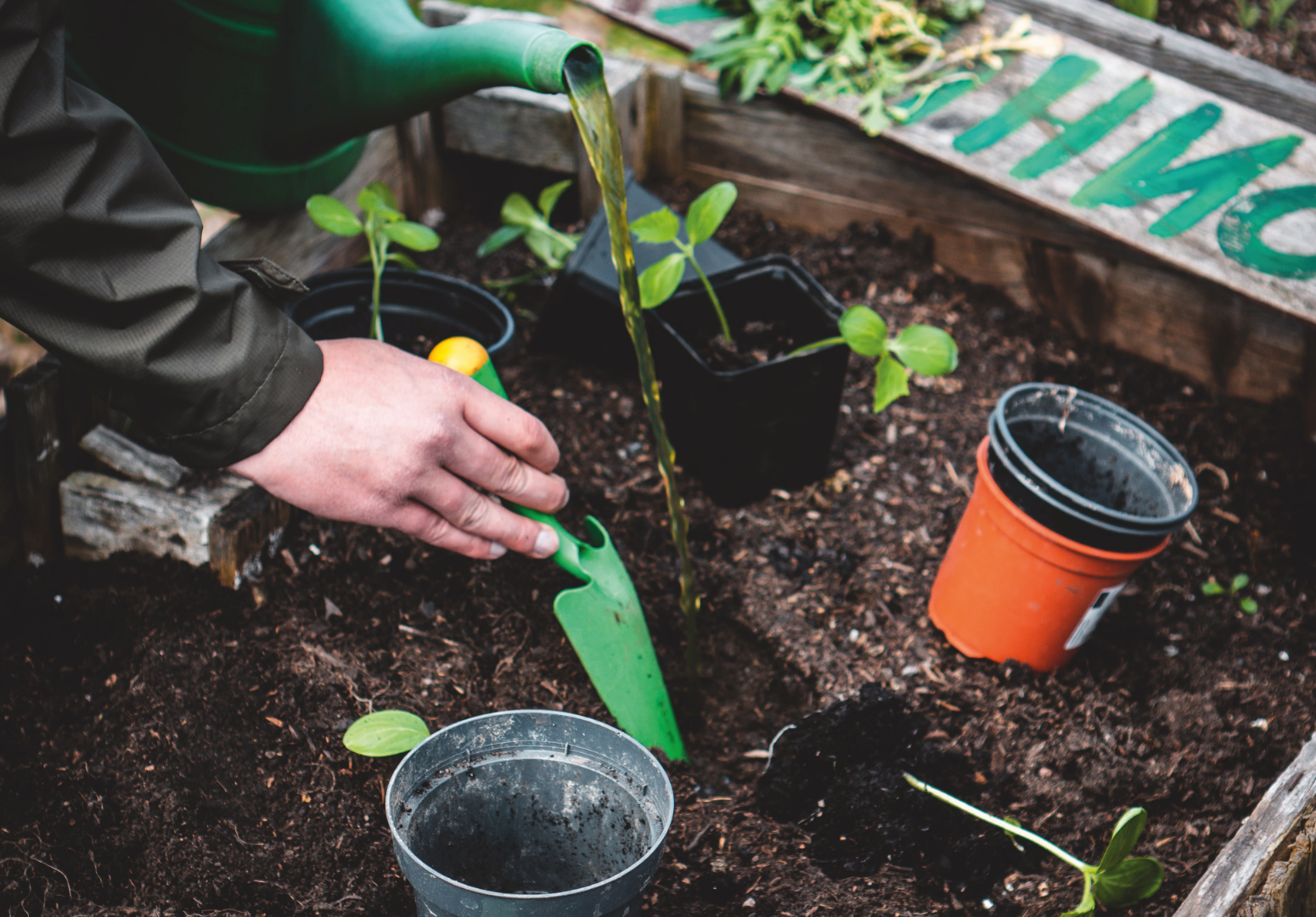The more you develop a love for gardening, the more tools you’ll find you need (or want). Always buy the best you can afford as poor-quality tools will need frequent replacement. Cast aluminium is hard-wearing and doesnot rust. Inferior-quality steel items tend to be cheaper, but are prone to rusting in damp or coastal regions. Best of all are high-quality stainless steel items as they will last a lifetime.
To test if the tool you are eyeing is top-quality stainless steel, take a magnet along with you to the shop. If the magnet sticks to the metal, this indicates it truly is made of the highest-quality stainless steel. Plastic tools are quite useful, especially if weight or grip is a problem for you – just make sure you store them well and away from the sun as the UV rays can make certain plastics very brittle.
Gloves
You may not think of gloves as a tool, but they are an essential item to happy gardening, helping to protect your hands, nails and cuticles. Besides thorns and sharp branches, potential hand hazards include shards of glass, pieces of rusty metal and other nasties that often work their way up through the soil over the years.
Plain cotton or synthetic gloves are great for simple chores such as weeding in dry soil, deadheading or sowing seeds. Once you move on to the dirtier, wetter jobs, such as planting, you’ll find gloves with latex or rubber-coated fingers and palms are more efficient. The most comfortable of these are made from stretchy breathable fabric, so your hands won’t get sweaty. If you’re thinking of doing seriously heavy-duty gardening, such as clearing bushes, it may be better to invest in a pair of tough leather gardening gloves, but these (like most gardening gloves) can be fairly difficult to find in small sizes.
Handheld Fork
If you need to weed or loosen the soil in a pot or a small patch of garden, a handheld fork is just the thing. Hand tools seem to have a mind of their own and have been known to disappear into bushes, so paint the handle a bright colour to make it easier to find. Look for one with a long extension handle to avoid bending.
Rake
An inexpensive rake with rubber or plastic teeth will do fine for gathering up fallen leaves and tidying up grassy areas. However, if you want to rake gravel, clear the ground of stones and other debris or break down dug-over soil before you plant or sow seeds. A good, sturdy steel rake with rigid teeth is a must.
Shovel
‘Spade’ and ‘shovel’ are often used interchangeably, but a spade should be used for digging while a shovel is for scooping. The latter usually has a shorter handle and is the perfect tool for scooping out planting holes and moving small amounts of compost or soil. It’s nice to have, but not essential unless you’re a serious gardener.
Hand Trowel
Whether you’re a pots-on-the-balcony gardener or the proud owner of a vast stretch of rolling lawn, a hand trowel is indispensable. This is the ultimate tool for planting herbs and seedlings. It’s essential for planting in containers and for mixing potting soil with small helpings of compost. It is also very useful for uprooting weeds. If you can only afford to indulge in one perfect garden tool, you should opt for a trowel – one that is made of a piece of forged stainless steel with a comfortable grip.
Digging Fork
For the best leverage, look for onewith a D-shaped handle. Your digging fork should have strong and sturdy tines. Remember, you’ll be using your footto push it down so make sure it has a comfortably wide top. These forks are great for spreading mulch, lifting plants, dividing perennials, loosening soil and turning compost piles.
Loppers
If you have trees and shrubs, you’ll need loppers (similar to pruners but with long or telescopic handles) to remove the thicker, unruly or dead branches. Loppers differ from secateurs and pruners in that they’re operated using two hands, making it easier to get to difficult-to-reach branches.
Secateurs or Pruners
These are necessary for all kinds of jobs around the garden besides actual pruning: deadheading, gentle shaping and removing old or dead branches. There are different secateurs or pruners for different jobs so if you’re going to buy just one, invest in a good-quality multipurpose pair. Bypass pruners (where the blades bypass each other) are best for live branches, while the anvil type (where the blade fits into a groove) are better for removing dead bits.
Handheld Cultivator
These have a set of curved tines that are attached to a sturdy handle. The tines are arranged like a fan or in a V-shape. Both varieties are great for roughing up the soil prior to planting. Handheld cultivators come in very handy for removing weeds from containers and small gardens.
Spade
Once you move away from the patio or balcony and into the garden itself, a spade is essential. One of the most important things about choosing the right spade is getting the correct size and height to minimise muscle stain. Look for the shaft length that best suits your height. The next thing to consider is head width. Using a wide head in a big patch will be quicker but the wider the head, the heavier the spade. Go for one with a narrower head if you have difficulty bending and lifting, or are going to be digging only in narrow borders. For extra ease (and to be kind to your foot), look for a spade that has either a tread or flattened area along the top of the head.
Gumboots, a hat and sunscreen
Gumboots help keep soil where it belongs – outdoors. Keep a pair next to the door and slip them on and off as you enter or leave the house. Other essential additions to protect gardeners from the harsh rays of the sun are a hat and sunscreen with a high SPF.
Words: Gail Alswang | Photography: Unsplash







